Tech Report
5 ways a laboratory double planetary mixer can save you money
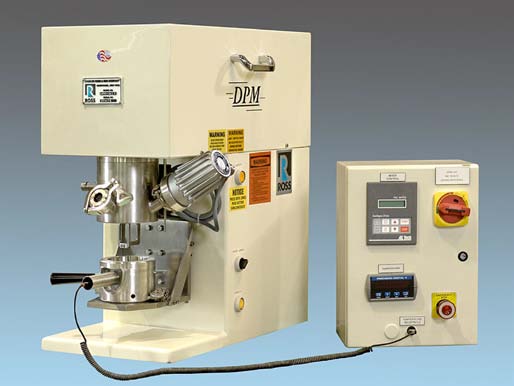
Technology Brief
The double planetary mixer is a highly versatile piece of process equipment. At the R&D level, it offers several advantages that can save time and money. This bulletin discusses 5 unique benefits of the double planetary mixer.
Double planetary mixer – a classic processing tool
The double planetary mixer (DPM) moves material by rotating two identical blades on their own axes as they orbit on a common axis. The blades continuously advance along the periphery of the mix vessel, removing material from the walls and transporting it towards the interior.
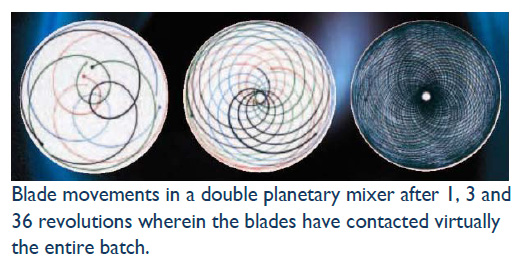
Although this type of mixer is well-known throughout the process industries for making viscous formulations, many may be unaware of key design features that contribute to its well-rounded set of capabilities, especially as an R&D tool. Below are 5 ways a lab model DPM can save you money.
1. It allows you to conserve raw materials.
Because double planetary mixers can be built in very small capacities, R&D scientists can perform formulation work using only small quantities of raw materials. This benefit is especially desirable on applications with precious or expensive components or where only small quantities of the mixture can be batched due to limited demand or short shelf life of the finished product. The smallest DPM models can accommodate as little as quarter pint batches.
2. It is completely scalable.
While other styles of bench-top mixers are available, such as magnetic stirrers and kitchen-type single planetary mixers, many of these devices are not scalable equipment and will require extra time and resources for experimentation once the product graduates to pilot or production scale. A laboratory DPM allows for a more seamless scale-up transition.
3. It can handle a wide variety of applications.
The DPM is one of the most versatile pieces of processing equipment. It can handle viscous pastes and dough-like materials as easily as it can prepare dry or wet granulations. It provides gentle but thorough agitation required by shear-sensitive gels, fragile components, fiber-filled mixtures or abrasive compounds. The DPM can also be used for vacuum drying and transforming wet cakes or slurries into free-flowing powder.
4. It can significantly reduce mixing and drying times.
Typically, cycle times on a DPM are significantly less than in a single planetary mixer. When the mixer is used as a vacuum dryer, overall processing times are dramatically reduced as compared to traditional oven drying methods.
5. It is a cost-effective alternative to sigma blade mixers (kneaders/extruders)
Precisely angled helical blades extend the operating viscosity range of the DPM to up to 8 million cP. These High Viscosity "HV" blades offered on Ross Double Planetary Mixers offer a cost-effective means of processing highly viscous materials that previously required a sigma blade or double arm mixer. Depending on specifications, a DPM is generally 1/2 - 1/3 the cost of a comparably-sized new sigma blade mixer.
Double Planetary Mixer Blade Designs
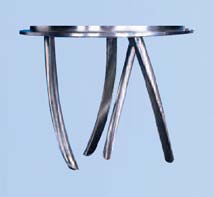
"HV" Blades

Rectangular Blades
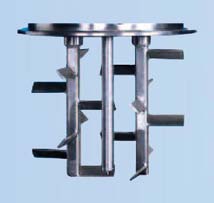
Finger Blades
Sample Application: Synthetic Bone Graft Material
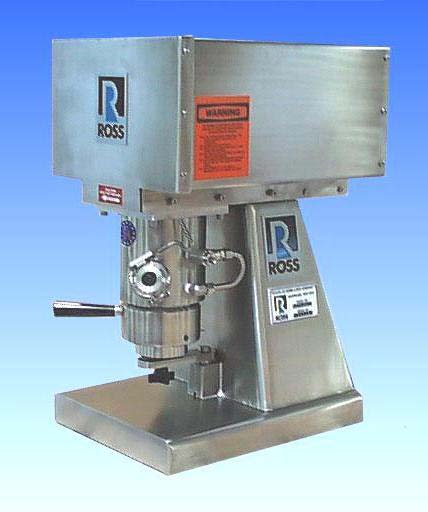
A Ross Sanitary Laboratory Model Double Planetary Mixer is being used to prepare small batches of a putty-like bone graft substitute. The DPM replaced a two-step process wherein poloxamer gel was made in a chilled glass reactor equipped with a stirrer and later transferred to a single planetary mixer in order to add the granular active material.
The previous procedure took a total of 7 hours while the Ross DPM now completes an entire batch in just 30 minutes.